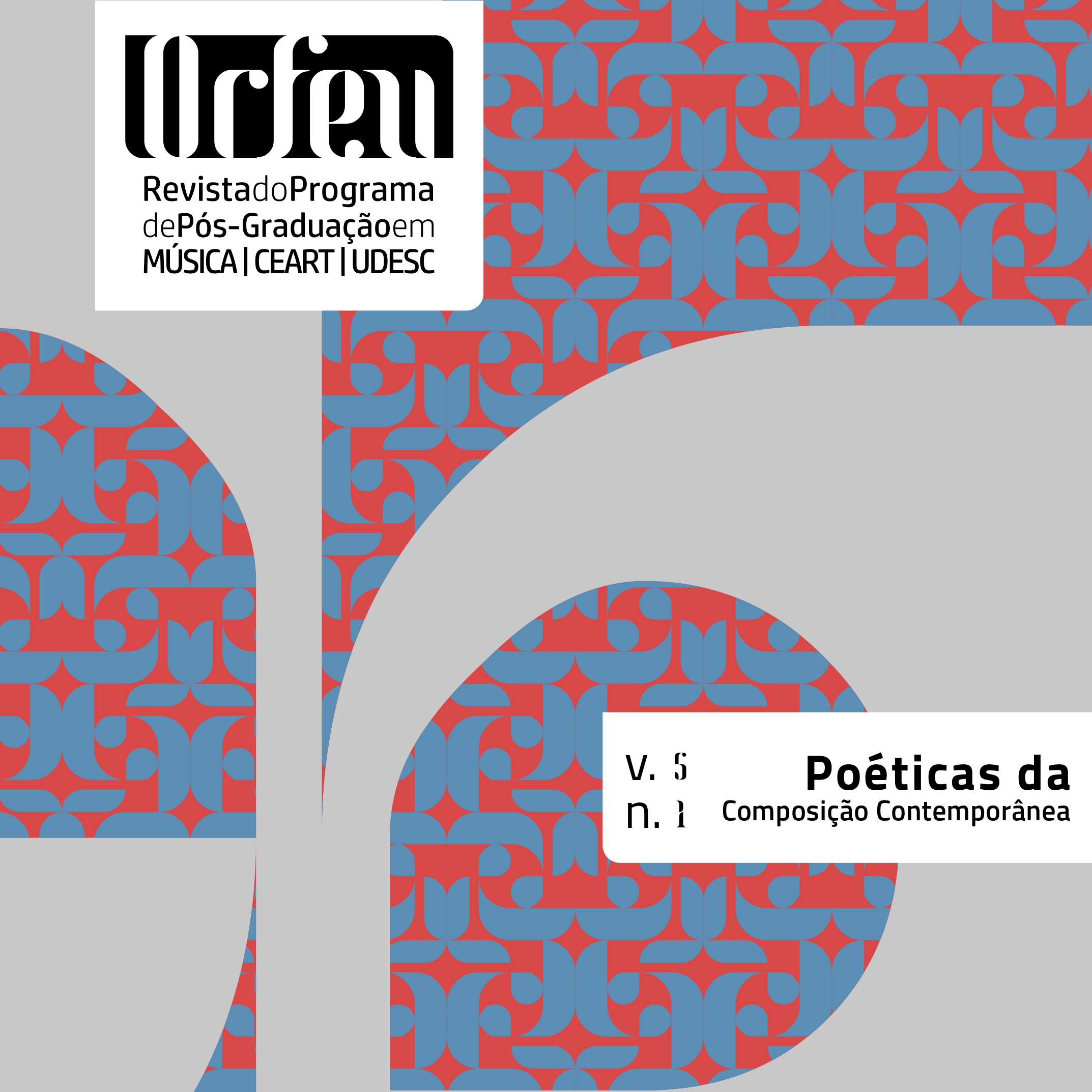Meteorites in the orchard: on the structuring potential of functional integration
DOI:
https://doi.org/10.5965/2525530405012020130Keywords:
Music composition, functional tonality, musical form, functional integrationAbstract
From Monteverdi to Mahler, R. Strauss and young Schoenberg, tonality has constantly challenged its very morphological bases and, moreover, it has proved to be rich in terms of forms and formal procedures. The main aim of this paper is to demonstrate the structuring potential of a compositional procedure I call functional integration, which consists in contextually imbuing functionality into chords, melodic excerpts etc. conceived by means other than functional tonality. For this purpose, I present the minimal morphological criteria for the structuring properties of tonality to work (e. g., the functional relations between sections of a work or the relations of reciprocity between local and larger scale levels of harmonic organization); and I report the compositional process of a clarinet piece, in which a process of functional integration is performed. In particular, I conclude that such a procedure has, above all, favored a constant attitude of discovery towards both tonality and the unique resulting form.
Downloads
References
FERNEYHOUGH, B. Second String Quartet (1982). In: FERNEYHOUGH, B. Collected writings. Amsterdam: Harwood Academic Publishers, 1995. p. 117-130.
OLIVEIRA, F. Z. N. Tonalidade e seus desvios: reconhecimento e elaboração composicional de relações funcionais em meio a procedimentos harmônicos não funcionais. Tese (Doutorado) – Universidade de São Paulo, São Paulo, 2018. Disponível em: https://teses.usp.br/teses/disponiveis/27/27158/tde-27022019-153133/pt-br.php.
PACKER. M. Dobra, redobra, desdobra: comentário e abertura composicional de obras musicais. Tese (Doutorado) – Universidade de São Paulo, São Paulo, 2018. Disponível em: https://www.teses.usp.br/teses/disponiveis/27/27158/tde-11032019-113922/ptbr.php.
RIEMANN, H. Vereinfachte Harmonielehre oder die Lehre von den Tonalen Funktionen der Akkorde. London: Augener & Co., [1893].
RIEMANN, H. Handbuch der Harmonie- und Modulationslehre (Praktische Anleitung zum mehrstimmigen Tonsatz). Berlin: Max Hesses Verlag, 1920.
ROSEN, C. Sonata forms. New York: W. W. Norton & Company, 1980.
SCHOENBERG, A. Harmonielehre. Wien: Universal-Edition, 1922.
SCHOENBERG, A. Composition with Twelve Tones (1941/1948). In: SCHOENBERG, A. Style and idea. New York: Philosophical Library, 1950. p. 102-143.
SCHOENBERG, A. Gesinnung oder Erkenntnis (1926). In: SCHOENBERG, A. Stil und Gedanke. Aufsätze zur Musik. Frankfurt: S. Fischer, 1976. p. 209-214.
SCHOENBERG, A. Harmonia. Trad. Marden Maluf. São Paulo: Editora Unesp, 2001.
SCHOENBERG, A. Funções estruturais da harmonia. Trad. Eduardo Seincman. São Paulo: Via Lettera, 2004.
STOCKHAUSEN, K. et al. Stockhausen vs. the Technocrats. In: COX, C.; WARNER, D. (ed.). Audio culture: readings in modern music. New York: Continuum, 2004.
Downloads
Published
How to Cite
Issue
Section
License
Copyright (c) 2020 ORFEU

This work is licensed under a Creative Commons Attribution 4.0 International License.
Authors who submit their manuscripts to be published in this journal agree to the following terms:
1. Authors retain the copyright and grant to the journal the right of first publication, whilst simultaneously permitting their work to be licensed under the Creative Commons License Attribution, which allows the sharing of work with recognition of the authorship and initial publication in this journal.
2. Contributions in this journal are open access; this means they are based in free use, and non-commercial applications.






